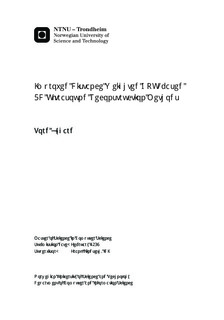| dc.description.abstract | Ultrasound is a flexible medical imaging modality with many uses, one of
them being intra-operative imaging for use in navigation. In order to obtain
the highest possible spatial resolution and avoiding big, clunky 3D ultra-
sound probes, reconstruction of many 2D ultrasound images obtained by a
conventional 2D ultrasound probe with a tracking system attached has been
employed.
Earlier work in this field has yielded fast Graphical Processing Unit(GPU)-
based implementations of voxel-based reconstruction algorithms such as Voxel
Nearest Neighbor(VNN), Pixel Nearest Neighbor(PNN), VNN2 and Dis-
tance Weighted(DW) reconstruction. However, it is desirable to improve
upon the reconstruction quality of the methods mentioned above. To do
so, we propose in this thesis an adaptive algorithm called VGDW, which
tries to intelligently smooth away speckles and noise, yet retains detail in
high-frequency regions, while being not being much slower than the above
mentioned algorithms. It also has a tunable weight function enabling value
collisions to be handled gracefully.
Using our novel adaptive algorithm, we are able to produce very high-quality
reconstructions, which are unanimously preferred over the output of the
above mentioned algorithms by both a group of medical personnel and a
group of technologists working with ultrasound, while having comparable
computation time to VNN2 and DW, i.e. 16%, 10% and 5% difference from
DW when computing a volume with 128 millions of voxels from a small,
medium-sized and very large input data set using an AMD Radeon 6470M
GPU. The algorithm also performs especially well with complex scanning
patterns with overlapping data when using a customized weight function. As
for future work, there are some aspects of the weight function that can benefit
from improvement. Also, turning the problem upside down and looking at
it from a pixel-based perspective could potentially give huge benefits both
in terms of probe movement robustness and performance. | |

